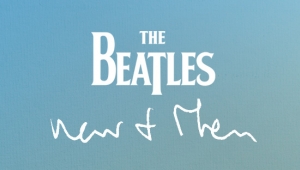| Columns Retired Columns & Blogs |
June 2022 Jazz Record Reviews

Ornette Coleman: Genesis of Genius: The Contemporary Albums
Ornette Coleman, alto saxophone; Don Cherry, trumpet; Walter Norris, piano; five others
Contemporary/Craft CR00320 (2 CDs, 2 LPs). 1958, 1959/2022. Lester Koenig, Nick Phillips, prods.; Roy DuNann, eng.; Bernie Grundman, remastering.
Performance ****½
Sonics ****½
Ornette Coleman, alto saxophone; Don Cherry, trumpet; Walter Norris, piano; five others
Contemporary/Craft CR00320 (2 CDs, 2 LPs). 1958, 1959/2022. Lester Koenig, Nick Phillips, prods.; Roy DuNann, eng.; Bernie Grundman, remastering.
Performance ****½
Sonics ****½
Anything but mainstream when they were recorded in 1958 and '59, Coleman's first two albums, combined in this minibox set, sound relatively conventional today. Coleman had yet to form his classic quartet with bassist Charlie Haden and drummer Ed Blackwell, and his roots in bebop and blues are more conspicuous than they became later. But it's clear that he'd already lit the fuse for the free-jazz explosion.
Coleman's sidemen on his debut release, Something Else!!!!, include his longtime colleague Don Cherry, sometime drummer Billy Higgins (whom Blackwell replaced in 1960), pianist Walter Norris, and bassist Don Payne. Cherry follows hard on Coleman's innovative heels, while the rhythm players mainly stick to bebop norms, keeping the horns somewhat in stylistic check. Coleman's compositions are brightly attractive in a hard-bop or bluesy vein; his solos, though, bend, stretch, and slur well beyond bop limits. On "The Sphinx," he seems to leave chord changes behind entirely.
Without a pianist, the follow-up album, Tomorrow Is the Question!, is freer still. Coleman's compositions remain comparatively accessible, and his blues and bebop roots still show, but his solos, and Cherry's, are more abstract than before. The bassists sound less confined than Don Payne did, while drummer Shelly Manne sporadically veers off-center. Straddling the line between bop and free, inside and outside, the music is provocative and alluring with its own dynamic charm.
Both these albums were remastered from the stereo versions cut before but issued after the initial mono releases. Thanks to legendary engineer Roy DuNann, both are remarkably well-recorded for their time.—Larry Birnbaum

Ches Smith: Interpret It Well
Pyroclastic Records PR 19 (CD, download). 2022. David Breskin, prod.; Ron Saint Germain, eng.
Performance *****
Sonics ****
Dramatic times prompt many firsts. A concert by Ches Smith's trio with special guest Bill Frisell, at Brooklyn's Roulette in May 2021, was one such return, a cautious and joyous-if-masked affair breaking the long lockdown. Frisell's guitar had been a key component in many hard-edged Downtown groups before he moved west and embraced a softer Americana. Some 30 years later, he returned to the area and, on this night, brought some of his old, hard-edged East Coast self back for a communal and celebratory masked exaltation.
At that point, the trio-plus-one had already recorded Interpret It Well, although it would take another year for the recording to come out. The album doesn't altogether raise the same joyful noise (and in fairness, memory might exaggerate the scream of Frisell's guitar that night). Instead, in fact, it achieves a rather rare beauty. The group—with violist Mat Maneri and pianist Craig Taborn—finds moment after moment of abstract grace within Smith's loose compositions. Together, they have an uncannily shapeshifting way of putting different instruments at the forefront without anything quite sounding like a solo. On tracks where Smith switches from drum kit to vibraphone, the assemblage of tonal blocks can be breathtaking while making the passages of rhythmic groove swing all the more.
The album was recorded by Ron Saint Germain (whose long career goes from Diana Ross to Sonic Youth and Bad Brains), and in fact Saint Germain and producer David Breskin worked together on Frisell and Vernon Reid's 1985 album Smash & Scatteration. Breskin and Saint Germain are becoming frequent names in the credits on pianist Kris Davis's fine Pyroclastic Records, contributing to the label's excellence from curation to final product.
Interpret It Well stands as a strong release on the label's small but impressive catalog.—Kurt Gottschalk

Melissa Aldana: 12 Stars
Aldana, tenor saxophone; Lage Lund, guitars; Sullivan Fortner, keyboards; Pablo Menares, bass; Kush Abadey, drums
Blue Note B003459602 (CD, hi-rez download, LP). 2022. Lage Lund, prod.; James Farber, eng.
Performance ****
Sonics ****
In new-millenium jazz, geographical boundaries are becoming irrelevant, and gender biases are becoming passÇ. A woman from Chile is now one of the preeminent tenor saxophone players in the world. In the last two DownBeat critics polls, Melissa Aldana has finished fifth, behind only men named Lovano, Lloyd, Marsalis, and Potter. Fast company.
There may have never been a major tenor player who shouts less, and who sounds less egocentric, than Aldana. 12 Stars (her Blue Note debut) was conceived and created during the pandemic. It reflects a time of isolation and inwardness for Aldana, when she was also dealing with the end of a relationship. The music is contemplative and searching, even grasping. Necessarily, it takes its time. Its quietude in the moment is deep, yet its intensity burns like an underground fire.
Like all important artists, Aldana finds objective correlatives that contain the reality of her interior emotional terrain. On tunes like "Intuition" and the title track, her long, unpredictably veering lines, in their pristine lyricism, convey complex variations of loneliness, doubt, hope, acceptance, and resolve. Her luminous saxophone sound is deceptively beautiful. On a piece like "Falling," that sound can suddenly incorporate intervallic leaps, from low expletives to keening cries at the very top of her instrument's range. She spends more time in her extreme upper register than any tenor saxophonist in recent memory. Her horn is the voice of her heart.
Guitarist Lage Lund (who produced the album and co-wrote most of the songs) and pianist Sullivan Fortner are brilliant collaborators. Every time they enter the music, they raise the already high level of discourse.—Thomas Conrad

Tommaso Moretti: Inside Out
BACE Records BR-22-01 (CD, LP, download). 2022. Tommaso Moretti, Bob Noize, prods.; Nick Broste, eng.
Performance ****
Sonics ****
Italy-born, Chicago-based Tommaso Moretti had worked for a number of years with trumpeter Ben LaMar Gay before Gay's breakout Open Arms to Open Us last year, on which the drummer was something of a revelation. His surface skittering atop the synths and beatbox of Gay's esoteric hybrid of jazz and rhythm'n'blues didn't dominate, but it essentially drove the tunes.
Moretti's mastery of quick, delicate, propulsive drumming is on fine display on Inside Out, his first session as a leader since his debut a decade ago. It's a remarkably pleasing album, with tunes (all Moretti's) that sound altogether fresh but with a feel that nicely throws back to classic Blue Note sides of the 1960s.
The success of the album lies squarely with Moretti, the bandleader, composer, and drummer (also second guitarist, while also adding mallet percussion, electronics, and occasional vocals). He brings specific settings to each track, recalling the days when jazz albums came with a sampling of moods. "Redefine the Purpose" is an uplifting vocal piece with carefully layered instrument lines. "Edge of a Decade" borrows from Afro-Brazilian percussion modes (and includes a triple-tracked cornet solo from Gay). "Era de Maggio" is a lovely arrangement of an old Napoletano folk song.
While few would mistake it for a lost jazz classic—a modern sensibility permeates the compositions—the recording itself, intentionally or not, nods back to those sides. The eight tracks were put together over a period of six months (from September 2020 to March 2021), with the six musicians going into the studio one by one to lay down parts. The mix is up close and personal, warm but not fussy. Issued on the tiny BACE (Building Artistic Creative Endeavors) Records, Inside Out likely won't top the charts, but it'd be a shame to let it pass by unheard.—Kurt Gottschalk

Immanuel Wilkins: The 7th Hand
Wilkins, alto saxophone; three band members; five guests
Blue Note B003408302 (CD, available as hi-rez download, LP). 2022. Wilkins, prod.; Chris Allen, eng.
Performance *****
Sonics ****
In the 21st century, no new artist has entered jazz with a bigger splash than Immanuel Wilkins. In 2020, when he was 22, his debut recording, Omega, was named the #1 jazz album of the year by The New York Times. In the JazzTimes Critics Poll, Omega finished sixth, and Wilkins was the #2 alto saxophonist and the #1 new artist. In the 2021 Downbeat Critics Poll, he won by a mile the "Rising Star" alto category.
Omega was a prepandemic work that addressed complex subjects such as suffering and survival within America's racial history. Wilkins's new album, The 7th Hand, arrives with large expectations. It was made (with the same high-power quartet) after the pandemic had altered human consciousness. Its concerns are more universal and spiritual than social. Wilkins has said, "I wanted my quartet to become vessels."
The 7th Hand is a suite whose first six concise movements encompass many modes of utterance. Pieces like "Emanation" and "Lighthouse" are sheer alto saxophone virtuosity. Notes fly from Wilkins and form patterns that are replaced by new patterns and become layers of sonic passion deep enough to drown in. Other pieces, like "Fugitive Ritual, Selah," and "Witness," have the rapt solemnity and aspirational yearning of hymns.
It all leads to "Lift," which, at 26 minutes, is half the album. It opens with wild saxophone seething in the midst of massive piano upheavals from Micah Thomas, bass furies from Daryl Johns, and drum bombardments from Kweku Sumbry. Wilkins, now fully a vessel, risks everything. But he is different from other avant-garde extremists, who often create maelstroms that feel fixed in place. Wilkins's testament keeps evolving and transforming, moving toward new states of selflessness. "Lift" is one of the most overwhelming jazz performances of the 21st century to date.—Thomas Conrad
- Log in or register to post comments




































